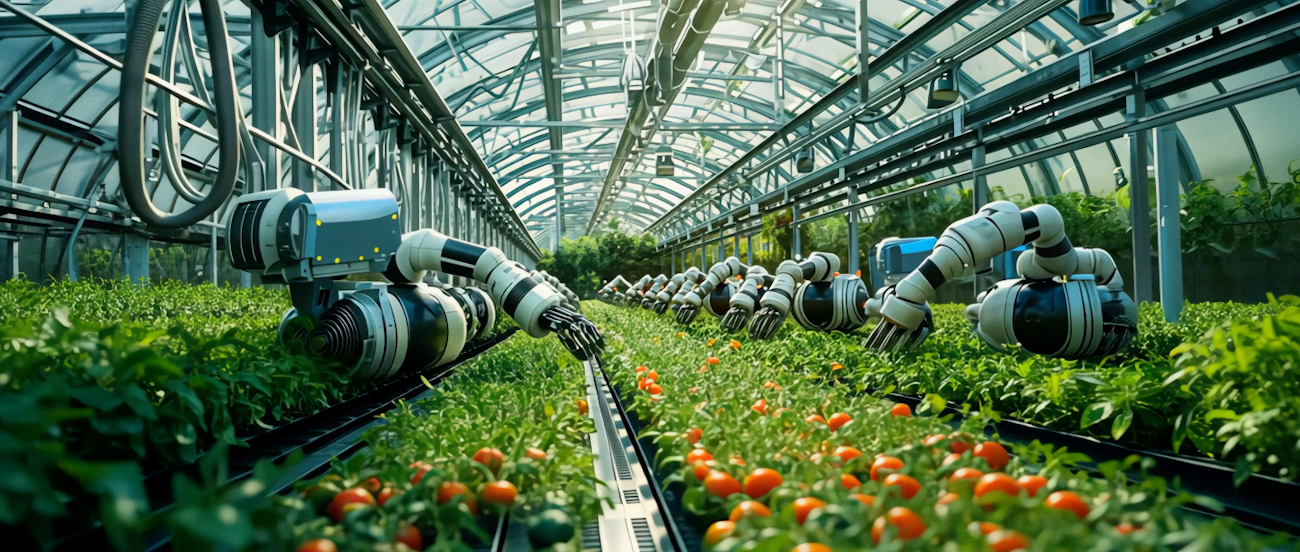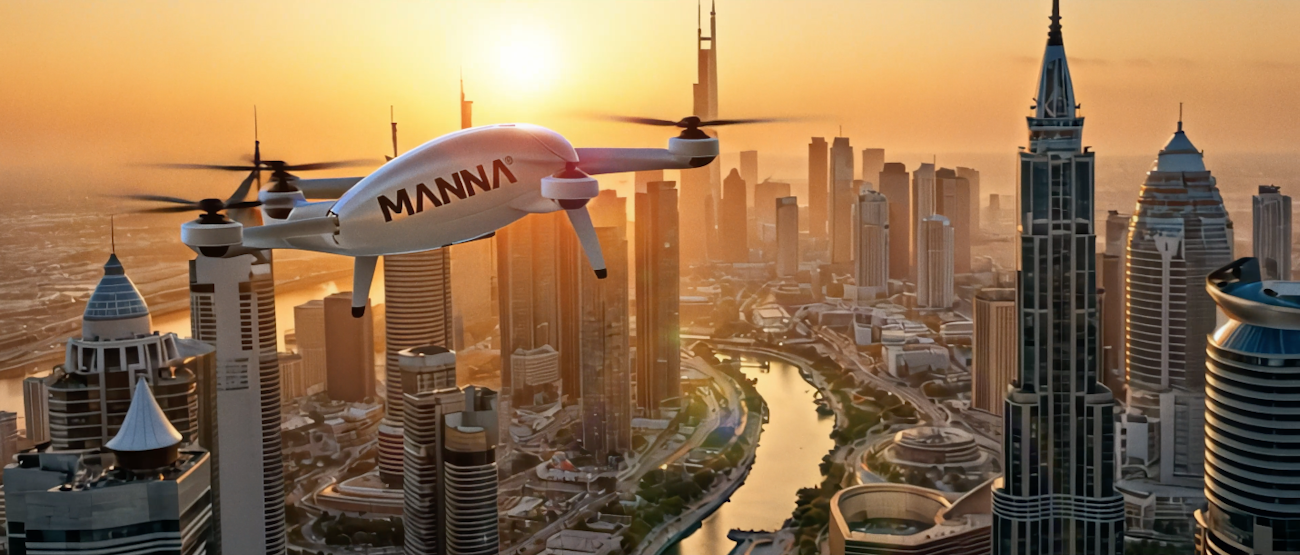Today, Molten Ventures launches 2054, an ambitious campaign exploring the question: What if you succeed? Set 30 years into the future, this short film showcases the transformative potential of Molten’s portfolio and the role of technology in shaping our world.

Why Make the Film?
Each year, Molten themes its CEO Summit, and this year’s theme was all about envisioning success: What happens if you succeed? While most people focus on the consequences of failure, entrepreneurs – and their investors – must imagine the impact of success. This optimism fuels the tech industry and resonates with Molten’s vision: to be the investment platform for visionaries who invent the future.
Through the film, we wanted to convey a more positive, forward-looking perspective, celebrating the profound changes that successful innovation can bring. This film is designed to inspire, showcasing Molten’s portfolio while encouraging entrepreneurs to pursue bold ideas that can truly change the world.
Why Look 30 Years Into the Future?
The film’s 30-year time frame allows for imaginative leaps. Thirty years may sound like a long time, but looking back to 1994 reveals just how much can happen in three decades. In 1994, the world wide web was still in its early stages, mostly used by tech enthusiasts, yet it went on to transform life as we know it. Similarly, giants like Amazon and precursors to today’s tech behemoths were just emerging, founded in garages and small offices by visionary entrepreneurs.
Drawing a parallel between the transformative potential of the web and today’s generative AI, ’2054’ explores a world where current advancements have evolved and reshaped daily life. By setting the film in 2054, Molten can explore bold ideas. This approach enables Molten to use imagination as a powerful tool, envisioning a possible world that remains within the bounds of the feasible.
Why Use Generative AI?
Just as the web transformed the 1990s, generative AI stands at the forefront of a new technological era. Molten chose to use this technology and push the boundaries of the creative possibility those tools can allow. Partnering with UK-based production company Buska Video, we set out to create a film that would inspire and engage by showing the scope of AI-driven creativity.
Generative AI enabled a visual and narrative complexity that was impossible just a year ago. Molten has always aimed to break new ground with its marketing—whether with unique campaigns or NASDAQ big-screen displays—and ’2054’ continues this tradition.
Finally, using generative AI for this film also counters some of the recent negativity around the technology, showing its potential for storytelling that resonates with human impact and meaning. Ultimately generative AI is like any other creative tool – it needs human imagination, emotion and judgement to create stories that appeal to other humans.
How We Made It: The Tools and Techniques
Creating a cinematic brand film set in 2054 required a complex blend of cutting-edge tools and techniques. Likewise, we wanted to create the film in such a way that all our CEOs can have their own version with a few simple changes and additional pieces of content. Here’s a look at the specific tools we used and how they came together:
ChatGPT was essential in developing the initial concept, analysing Molten’s portfolio to highlight industry sectors and products that would be most compelling in a futuristic setting.
Grok by X was used to throw together quick storyboarding ideas and share with the creative team.

Photoshop Generative Fill allowed us to age single still images of Molten team members Leonora Ross Skinner and George Chalmers by 30 years, which were then animated using Hedra for lifelike performances.
ElevenLabs voice cloning enabled us to fine-tune both the script and its delivery, giving us flexibility throughout production.
Visuals began as still images in Midjourney and Flux, then upscaled with Magnific and animated in Runway Gen-3. Complex shots, like a camera moving inside a driverless car, used Kling and Luma’s Dream Machine to achieve smooth transitions.
For a Mars city scene, Immensity added a 3D look, while Topaz Video AI provided the final upscaling to 4K resolution.
Integrating real-world objects, like drones, satellites, and medical devices from our portfolio, was one of the toughest aspects of production. These objects were created as mock-ups in Photoshop, then isolated on blue screens and keyframed in Premiere Pro to achieve realistic movement and lighting.
Traditional CGI was not used, so combining generative AI elements required significant experimentation to get the lighting, perspective, and motion right.
In total, over a dozen AI tools were used across two months, each step designed to push the boundaries of what’s possible with GenAI today. It’s likely that these tools will have progressed even before the launch, so that is part of what we were trying to do—capture a moment in the technology’s evolution.
Bringing the Script to Life
Crafting a script for a speculative future film is no small feat. To make the narrative authentic and reflective of the visions of our portfolio companies, we began with an exercise in imagination.
Ahead of the CEO Summit, we asked our CEOs a question tucked into their pre-event survey: “Imagine you’ve succeeded to the point your technology is part of everyday life. What does the world look like in 2054?”
The responses were both inspiring and ambitious, providing the core ideas for our storyline. Essential to the cinematic drama of the film is a simple but compelling script developed in house at Molten, we wanted the visual storytelling created by Buska Video to speak to the viewer.
Opening the film with a narrator already in the future, allowed us to reflect upon the changes that have already happened. This simple storytelling device creates a positive inevitably to the progress already being made by our portfolio in 2024.
The montage sequences posed a particular challenge. While traditional CGI requires immense detail—like computer modelling, physics engines, and texture maps—generative AI works almost in reverse, relying on minimal inputs and the probabilities of what comes next. When using GenAI for video, it’s a bit like forecasting the weather: the further you go, the less predictable (or accurate) the results. To get an output that looked right, many sequences had to be run repeatedly, sometimes dozens of times.
In designing these montages, we aimed to create a future world that felt plausible but not excessively literal. Each sequence subtly hints at Molten’s core investment areas, suggesting what the future might look like with these technologies in play.
Where possible, we incorporated tangible products from our portfolio companies, like Manna’s drones, Endomag’s cancer diagnostic tools, SatVu’s satellite imagery, and ICEYE’s radar technology. Featuring physical products was far more feasible than enterprise SaaS solutions, but we wanted the film to convey the breadth of our portfolio’s impact regardless.
Challenges and Insights from Working with Generative AI
Working with generative AI gave us a unique perspective on the future of creative production. While GenAI is often touted as a way to streamline creative work, the reality is more complex. For instance, GenAI can hallucinate—generating surreal or unpredictable results that don’t always align with the desired outcome. This unpredictability made certain scenes, like the animated satellite sequences, particularly difficult to achieve without traditional CGI.
To create the seamless blend of real-world objects and AI-generated backgrounds, we used blue screens and keyframing techniques in editing software like Premiere Pro. Integrating elements like satellites and medical devices required carefully coordinated lighting and movement to achieve a realistic look, which became one of the project’s most significant challenges.
Likewise, it was interesting to find that while GenAI is good at generating random faces, or famous faces, it is still challenging to create specific human faces where training data is minimal.

This was the origin of the creating Molten’s “future office” at the opening of the film. At smaller size, the limitation of the AI is less noticeable. Despite these hurdles, we found GenAI to be an invaluable creative tool when used thoughtfully. It still requires significant human oversight and judgment—without which the results could quickly devolve into what we call “AI slop,” or a generic, low-quality output lacking the nuance that makes storytelling compelling.
Future Implications of Generative AI in Film and Media
This project opened our eyes to how generative AI could shape the future of media production, not only for venture capital storytelling but across industries. Just as the internet redefined the 1990s and early 2000s, GenAI has the potential to change how we create, market, and consume content.
A year ago, creating a film like ‘2054’ would have been impossible; by next year, it might become routine. This rapid advancement mirrors Molten Ventures’ commitment to staying on the cutting edge, whether in investment strategy or how we showcase our portfolio companies.
By embracing AI-driven production, we’ve created a campaign that isn’t just a message about the future—it’s an example of future-facing technology in action.
A Look Forward
Ultimately, ‘2054’ is more than just a campaign. It’s an embodiment of Molten’s ethos: to accelerate breakthrough ideas and support visionary founders. Through this film, we hope to inspire not only our portfolio companies but also a wider audience, showing what’s possible when ambition meets the right support at the right time. The ‘2054’ film and campaign capture our excitement for the future.
We’re thrilled to launch it today, showcasing the extraordinary potential within our portfolio and inviting the world to imagine what happens when innovation succeeds.
For a closer look at ‘2054’ and the technologies driving tomorrow, we invite you to watch the film and explore our campaign microsite.
Here’s to the visionaries, the dreamers, and the innovators—because when they succeed, we all do.












